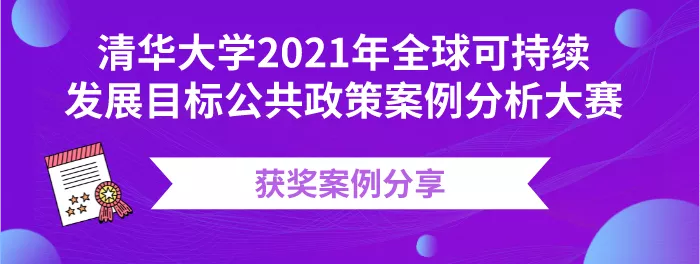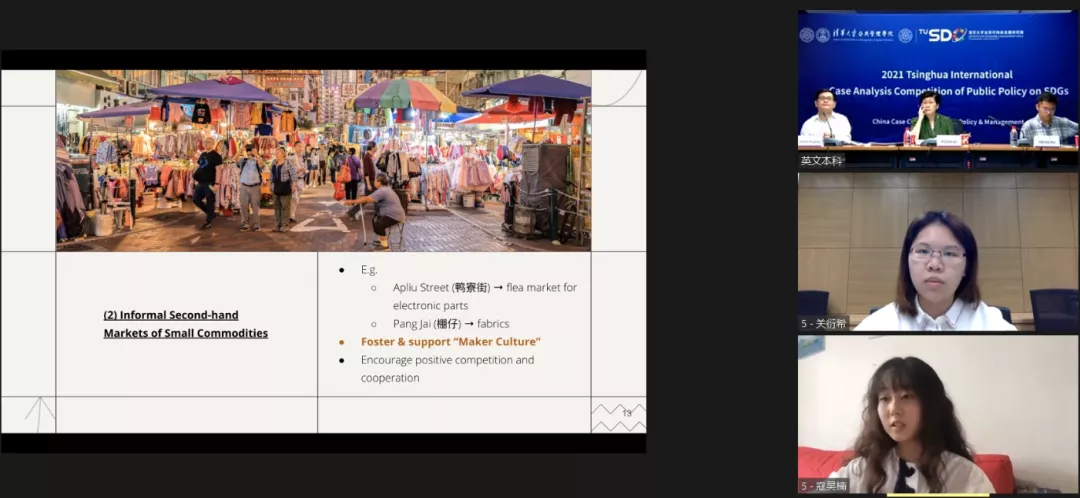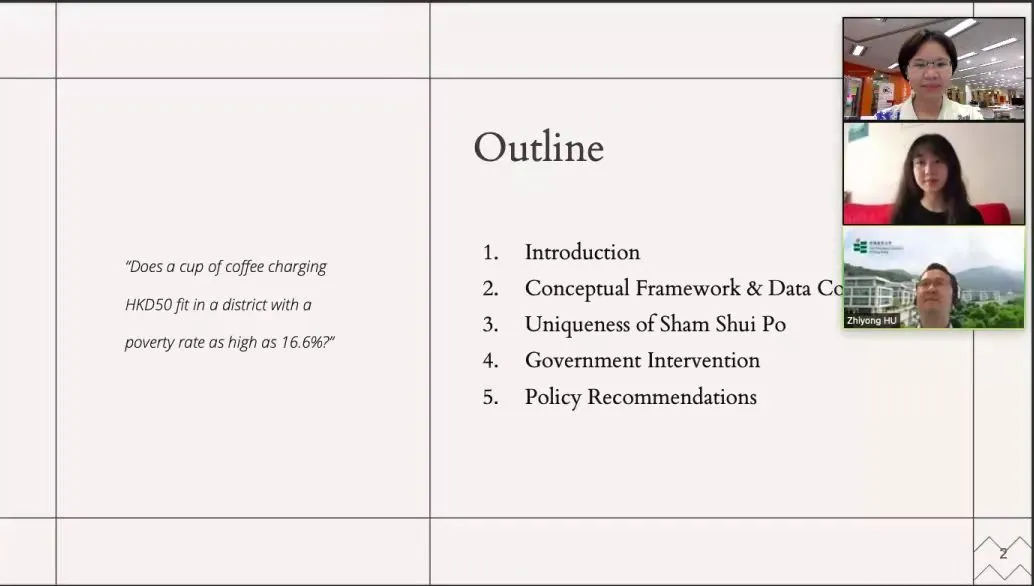
From April to August, the 2021 Tsinghua International Case Analysis Competition of Public Policy on Sustainable Development Goals (SDGs) was successfully held. This competition was co-organized by the China Case Center for Public Policy and Management at SPPM of Tsinghua University and the Institute for Sustainable Development Goals of Tsinghua University. The competition aims to encourage global students from different courtiers, cultures, universities and professional backgrounds to pay attention to SDG public policy issues, develop academic analytical skills and critical thinking abilities by discussing complex and real-life scenarios. This year’s competition attracted 49 teams from 53 universities and colleges across China, the U.S., the U.K., Switzerland, Singapore, Ireland, Australia and Germany, with a total of 147 participants. Team Eruri won the first prize in the undergraduate student competition with case analysis report "Sham Shui Po Is the New Brooklyn”: Could New Cultural Industry and the Original Community Coexist?.
Author
Guan Yanxi, The Education University of Hong Kong
Kou Wunan, New York University
Advisor
Dr Fox Hu Zhiyong, Associate Professor of the Department of Asian and Policy Studies at The Education University of Hong Kong
Keywords
Urban Redevelopment; Hong Kong; Cultural Industry; Gentrification
Case Overview
What is it like to appreciate artworks in the slums of a global city? In recent years, many creative youths have seeded their dreams of buoyant cultures and arts in Sham Shui Po - the hottest Instagram-worthy location in Hong Kong with cropping-up art spaces, cafes, and boutiques, but also the poorest district with the lowest cost of living that enables the underprivileged with diverse cultural and ethnic background to take shelter. Sham Shui Po used to tell no skyscrapers and extravagance but merely street hawkers and life struggles, but as a growing number of newcomers appreciate its vibrance and add zest to the district’s name, people are worried about the replacement of original residents and businesses and the loss of authentic identity and local character. This case study tries to explore the possibilities of the government’s role in culture-led gentrification. Could the new cultural industry and the original community coexist?
Experience Sharing
When seeking to explore an on-going neighbourhood transformation, setting foot onto the field is the crucial step for one to grasp the subtle changes. Before we conducted the actual field visits to Sham Shui Po, major efforts and time were invested into documenting the neighbourhood reorderings in past years via literature and in-depth interviews with local stakeholders and scholars. The then field visits not only served as an empirical source to calibrate and refine the data gathered but provided us a direct picture of the community which we could have never discovered on paper. The complexities arising from interest conflicts among various concerned parties were indeed surging. However, the most enchanting part lied in the human touches that bonded the original residents and newcomers who jointly fostered an organic and harmonious relation rejuvenated the neighbourhood at a measured pace.
The research process was not smooth as practical constraints always emerged and adjustments were thus required to take place constantly. For example, the case study was initially designed to be investigated upon quantitative data and eventually landed on a qualitative data basis. As mentioned above, numbers were too frigid to reflect the humanity components in the case. In order to present a representative and authentic case study, one needs to work hard adopting flexibilities and riding the wave, but isn’t that exactly the fun of doing research?
We greatly appreciate the chance to take part in the 2021 Tsinghua International Case Analysis Competition of Public Policy on SDGs. Not only did it encourage us to contemplate the issues we care about, but also provide a platform for communication. It’s truly invaluable to learn from our peers’ findings as well as the review committee’s comments. We will press on, with the lofty end, in mind that one day our research would be more than paper talk but a contribution to society.


Team "Eruri" in the Final Competition
Written by Team "Eruri"
Edited by CCCPPM

